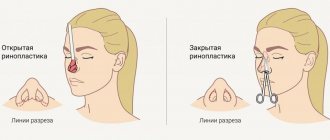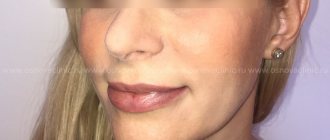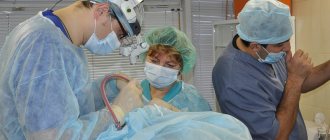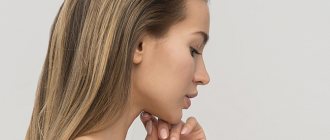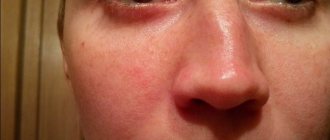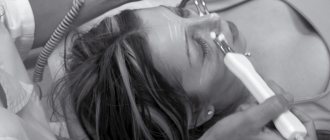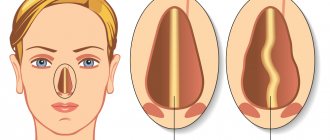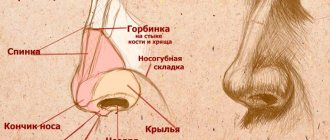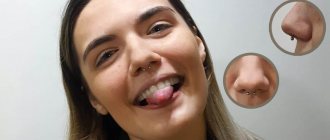Despite the frequency of such an operation, changing the nose requires skill from the surgeon and patience in compliance with the rules of postoperative recovery from the patient.
There are quite a few prohibitions, but they are all important.
Alcoholic drinks can only be consumed after changing the shape of the nose after six months. Although, some doctors allow you to drink a little wine after a month.
General tips for post-operative rehabilitation
Nose correction
There are a lot of plastic surgeries performed. One of the popular areas of facial correction is the nose. The success of the procedure depends not only on the hands of the plastic surgeon, but also on the patient’s compliance with the rules during the recovery period. Rehabilitation also implies adherence to the necessary prohibitions. Alcohol after rhinoplasty is an absolute contraindication.
Rhinoplasty, despite its popularity, is a rather serious surgical procedure. The recovery period is slow and until the final result, your nose and well-being will change several times.
After anesthesia
As soon as the patient wakes up after anesthesia, his first sensations are weakness, drowsiness, and nausea.
Such side effects appear after anesthetics. Once they are eliminated from the body, the symptoms will go away. After the operation is completed, turundas are inserted into the patient’s nose, and a plaster or plastic bandage is applied to the sniffing organ itself. Therefore, it will not be possible to see what this area looks like immediately after surgery.
Important! It is strictly forbidden to remove the plaster cast and cotton pads on your own.
It is not even recommended to use clothes that you have to put on over your head, especially with a narrow collar.
Appearance after surgery
But, if you look at the face, it is already noticeable that the intervention was serious. The eyelids and nose area all look swollen with bruises. Even the cheeks can be affected. After a week, the fluid will decrease and the patient will look like himself.
Rehabilitation by day
It is divided into several stages and contains the following points.
First two days
- The patient experiences pain, so he is forced to take painkillers as prescribed by the doctor.
- A course of antibiotics is required to eliminate the risk of infection.
- For the first few days, a person is forced to walk with hemostatic turundas that absorb secretions.
- The patient is forced to breathe through his mouth until the turundas are removed.
- When the old turundas are removed, the mucous membrane is treated with special means for speedy rehabilitation, then new ones are inserted. Contrary to misconceptions, the procedure for removing turundas is completely painless.
First 7 days
The patient is recommended to lie more on his back.
In 2 weeks
The sutures are removed, and the cast or fixing bandage is removed. The itching and irritation caused by the plaster goes away. The main thing is to endure this period and not remove the bandage yourself, so as not to deform the still unhealed nose and spoil the result of rhinoplasty. If everything went well, then on day 10 the plaster itself may fall off. In this case, you should definitely contact a surgeon.
When the tampons are removed, there are still stitches in the nostrils and in the folds of the wings of the nose. You cannot pull them with tweezers, otherwise the seams may come apart and remain as unsightly scars. During this period, it is not recommended to actively show facial expressions and laugh; lip movements can also affect the course of recovery. In the first two weeks the voice is nasal, but this goes away over time.
The duration and severity of recovery depends on the extent of surgical intervention. The wider the area of damage, the greater the discomfort. If the correction was carried out on the tip of the nose, then rehabilitation will take place quickly, within a week, with minimal swelling, unlike plastic surgery of the bridge of the nose.
After a 2 week break after rhinoplasty
The next stage of recovery lasts 2 weeks after surgery and 2.5 months. It is not as difficult as the postoperative period. The stitches have already been removed and the splint is missing. Discomfort occurs when breathing, which cannot yet be fully nasal due to long-term swelling. The bruises have not yet gone away, but the outlines of the nose are already visible. Although, it will still be approximately 2 times larger than planned due to swelling, which can remain in the nose area for up to 6 months. The final version of the nose is far from complete, because in 3 months only 50% of the swelling will go away. Therefore, you will have to wait about 1 year.
At the end of the first month after rhinoplasty, you can go out in public and not hide, fearing for the appearance of your face. The size of the nose will change over several months, improving in shape.
Final period
Starting from the third postoperative month, final rehabilitation begins. During this period, the swelling goes away completely, the nose becomes normal in shape and size. With a successful operation, the imperfections that cause discomfort should go away. If the surgeon made a mistake, the effect will be the opposite. At this stage, you can summarize the operation and determine whether it was successful or not.
Traveling after dental surgery
Many patients do not attach much importance to some of the attending physician’s prohibitions. Unfortunately, the consequences can be really serious. Thus, drinking alcohol can slow down the wound healing process, and solid food can dislodge the implant and destroy bone material. But few people know that air travel after sinus lifting and bone grafting is fraught with serious complications. There are several reasons for poor health:
- fear of flying;
- Atmosphere pressure;
- oxygen level;
- dry air;
- change of time zones;
- motionless pose.
It is worth understanding each of them in more detail.
A flight, even a short one, quite often causes feelings of anxiety, fear and sometimes reaches the point of panic. Experiencing severe stress, a person is very harmful to his health - the capillaries begin to significantly increase in size and can burst. As a result, hematomas, blue discoloration or pallor appear. If a short time has passed after sinus surgery and the wounds have not had time to heal, then due to fear of flying, the blood supply to the tissues in the area of the maxillary sinuses may be disrupted. You may end up with severe headaches, bleeding, or misalignment of the implants.
Changes in atmospheric pressure during takeoff and landing are the second reason to avoid flying for a certain period. The maxillary sinuses are small chambers filled with air. It is precisely due to the displacement of the mucous membrane that the sinus lift procedure occurs. In normal times, the anastomosis has normal patency, so the pressure has time to change without any special consequences for the person. In our case, the patency of the anastomosis has not yet had time to recover. The patient begins to feel nasal congestion, headaches and toothaches.
The third reason is oxygen levels. On airplanes there are quite often problems with the sufficiency of oxygen in the air. If the brain lacks it, hypoxia begins. Many people do not know that high-altitude hypoxia, together with any dental surgery, can create many problems, including:
- an increase in breathing rate and, as a result, an increase in load on the nasal sinuses;
- a sharp jump in hemoglobin in the blood and acceleration of blood flow, which can provoke severe bleeding;
- dizziness.
Dry air is another problem. Rising to altitude, the body begins to lose a lot of fluid and dry mucous membranes can provoke bleeding. To restore water balance, it is recommended to drink a lot of water, moisturize the skin and treat the nasal mucosa with special products - saline solutions or Vaseline creams. But, after a sinus lift, you cannot use such remedies without a doctor’s permission, so it is better to postpone the trip for at least a week.
A sudden change in time zones makes air travel after a sinus lift and bone grafting a real challenge. If no surgical interventions have occurred, the person feels:
- fatigue;
- drowsiness or insomnia;
- bad feeling;
- decreased protective functions of the body.
In the case of osteoplasty, the patient’s immunity is already quite weakened due to the use of antibacterial drugs, so a sharp decrease in protective functions can cause severe pain and rejection of the material.
Low mobility in the aircraft cabin provokes congestion and the appearance of edema. Swelling in recently injured maxillary sinuses leads to difficulty breathing, bleeding, headaches and toothaches.
But the most important contraindication for air travel after surgery is the presence of stitches. If the dentist has not yet removed the stitches, then the primary healing process has not yet completed. Due to the enormous load on the body on an airplane, the patient’s stitches may come apart, which will lead to negative consequences: ranging from minor bleeding to death.
Duration of the recovery period
It is difficult to say how long it will take for the body to fully recover. This is influenced by several factors:
- Complexity of the operation . If the correction was minimal, the nasal tissue will heal quickly. When bones and cartilage change, rehabilitation can last up to 1 year.
- Feature of the organism . Some people have soft cartilage, others have hard cartilage, just like their skin is soft or thick. This affects the rate of cell and tissue recovery, as well as the regeneration process itself.
- Following your doctor's advice . It is important to follow the rules of the recovery period.
- Features of access to the correction site . With the open method, additional time will be required to smooth the seams.
Taking into account all the nuances, recovery can take from 4 to 12 months. Compliance with the conditions of the rehabilitation period is important.
Indications for maxillary sinusotomy
Indications for the use of maxillary sinusotomy are quite varied:
- chronic sinusitis;
- cysts of the upper jaw;
- nasal polyps;
- benign tumors;
- foreign bodies in the maxillary sinus: remains of filling material, tooth roots, particles of intraosseous implants;
- blood clots;
- damage to the walls of the maxillary sinus.
If a malignant tumor is suspected in the maxillary sinus, a biopsy is performed during maxillary sinus.
What not to do
In order for a new nose to heal quickly, it should be protected from various negative factors. Be sure to exclude:
- - consuming large amounts of salt , which provokes pain and swelling. This also includes smoking. It is not recommended to consume ice-cold and hot food and drinks for 3 weeks;
- — Alcohol is strictly not recommended;
- playing sports to avoid mechanical damage to the nose. The tissues after surgery are very fragile and can be damaged even after heavy lifting. In addition, it is not recommended to even tilt your head forward while the turundas are standing. Women should not lift children or pets. Visiting the gym is allowed after 3 months. Professional sports are banned for six months;- - overheating so as not to interfere with bones, cartilage and skin growing together. Sauna, steam bath, solarium and open sun are not recommended for 3 months. Even hot baths are prohibited. You can only take a warm shower, but while the splint or cast is in place, you cannot get your head wet. If you stay in the sun for a long time and do not use protection, you can get hyperpigmentation;
- - freezing , as vasospasm may occur and serve as an obstacle to tissue regeneration;
- - exercises in the pool and in open water for two months to prevent infection. In addition, you need to be wary of colds, which when swimming increases the likelihood of their occurrence;
- - use of glasses , since even the lightest frames can lead to deformation of the nose due to pressure on the bridge of the nose and possible pain;
- - nasal rinsing , carried out after removing the plaster on the recommendation of a doctor. To do this, you need to tilt your head slightly to the side, use a special pipette to pour the medicine into the nostril opposite the side of the tilt, blow your nose, drip peach oil and treat the mucous membrane with ointment;
- — applying cosmetics for at least 14 days. At the same time, you can’t wash your face at all for the first days. Firstly, because of the plaster, which is not allowed to get wet, and secondly, because of the downward tilt of the head. Washing can be done with cleansing tonics or micellar water until the doctor removes the cast;
- - lying on your side and stomach so as not to injure your nose. It is better to sleep on a firm, high pillow or in a semi-sitting position on a special bed with a raised headboard. This period should last at least 20 days, after which you can carefully turn on your side. Full sleep is allowed after six months;
In general, it is not advisable to even touch your nose, not to mention tearing off the crusts inside, so as not to provoke additional bleeding.
Preparing for rhinoplasty of a nose with thick skin
Before prescribing surgery, the doctor performs a thorough examination to assess the thickness of the skin of the patient's nose. To do this, the techniques of palpation, squeezing the skin between the fingers, and determining the degree of mobility of the skin in relation to cartilage and bone tissue are used. It is important to understand: skin thickness is a constant parameter that significantly influences the choice of correction technique and the final result. In the preoperative period, the patient needs to adjust his usual lifestyle: reduce the amount of tobacco and alcohol consumed, eliminate the use of anticoagulants and antiplatelet agents, minimize the level of physical and emotional activity.
Alcohol after rhinoplasty
Patients often ask the question: Why should you not drink alcohol and for how long?
Reasons for the ban
The fact is that alcohol-containing drinks carry several negative manifestations:
They quickly expand all the vessels, and then they sharply narrow, disrupting blood flow.- Small blood clots appear in the smallest vessels.
- This is a diuretic liquid and if you drink alcohol a few days before surgery, the body can become dehydrated, which will lead to problems with anesthesia. The effect of anesthesia is enhanced if alcohol remains in the body.
- In addition, blood clotting decreases, becoming thinner, which prolongs the healing process.
There are many small vessels in the nose through which blood circulates, enriched with oxygen. A lot depends on blood flow. The worse it is, the longer the recovery will be and the higher the risk of complications.
In everyday situations, you can notice that a drinking person blushes. This occurs due to blockage of small vessels with poor blood flow.
If a person is not a heavy alcoholic, in the first 14 days after plastic surgery, even a small amount of alcohol-containing drinks can impair blood circulation.
During the recovery period, alcohol is still prohibited because it cannot be combined with painkillers and sleeping pills prescribed by a doctor as needed.
The minimum period of abstinence from alcohol should be 30 days. Then, for those especially suffering, it is allowed to drink wine in limited quantities.
This permit does not apply to champagne, low-alcohol and energy drinks, and beer. The optimal period of abstinence is 6 months.
Consequences after drinking alcohol
- Increased swelling, especially in the eye area;
- metabolic disorders and long-term rehabilitation;
- incompatibility with medications, which leads to complications;
- risk of increased injuries when intoxicated.
What is allowed?
- About 1-3 weeks after rhinoplasty, you can start going out in public. Then you can return to work. But you should not overwork and engage in heavy physical labor.
- 14 days after the operation you can travel by plane. In case of urgent need, you can fly 5-7 days after rhinoplasty.
- Antibiotics are not prohibited. But the application must be agreed with a specialist.
- You can plan your pregnancy. But it’s better to please your husband with a positive test a year after the operation.
- You can and should relax, go for a walk and take time for yourself.
- Look in the mirror and admire your new beautiful nose.
Recovery assistance
You can and should help your body get through the rehabilitation period after rhinoplasty faster and easier. To do this, just follow these simple recommendations:
- Follow a salt-free diet, supplementing your meals with vegetables and fruits, as well as proteins. It is advisable to minimize carbohydrates and fats.
- Use special gels - Traumeel S and Lyoton, after consulting a doctor. This will help get rid of bruises quickly.
- When preparing for bed, you should place pillows on your sides so as not to roll over while sleeping on your side or stomach.
Patience, calmness and confidence in the result are important qualities for obtaining a positive result. Reviews say that if the plastic surgeon is a professional and qualified specialist, then a beautiful and graceful nose will definitely please you. The main thing in this matter is that all actions are correct, not only during the operation, but also after.
Types of rhinoplasty for thick skin nose
Similar to classic rhinoplasty, thick skin nose correction can be performed using open or closed techniques. The choice in favor of one technique or another depends on the purpose of rhinoplasty, the specifics of the problem being solved and the scope of the upcoming correction.
- open rhinoplasty – access to the correction area is achieved by cutting the vertical fold of skin separating the nostrils;
- closed rhinoplasty - the incision is made in the vestibule area.
How is rhinoplasty performed on thick skin?
The stages and course of the operation are not fundamentally different from classic rhinoplasty of a nose with medium thickness, except that when plastic surgery of a nose with thick skin, the surgeon has to face a number of difficulties:
- difficult to predict result;
- limited scope of correction;
- “shape memory” effect - the skin tends to return to its previous position;
- tendency of the skin to rough scarring;
- less pronounced result of the operation as a whole.
At the first stage of the operation, after marking is applied, anesthesia is administered. The skin and nasal mucosa are treated with an antiseptic. Next, the surgeon makes incisions and corrects the previously identified problem area.
The surgeon's main instrument (with the exception of correction of the tip of the nose) is a piezo device, which accurately and quickly cuts hard tissue with ultrasonic waves. The use of piezo technology significantly reduces the invasiveness of the operation, the risk of severe hematomas and edema, thereby reducing the duration of the rehabilitation period. At the final stage, the position of the nose is fixed, sutures and bandages are applied, and turundas are inserted.
Piezo device
Contraindications for rhinoplasty of the nose with thick skin
Until recently, thick skin itself served as a contraindication for aesthetic surgery of the external nose. Today, with the improvement of instruments and techniques of rhinoplasty, this limitation has ceased to be relevant. However, rhinoplasty cannot be prescribed to a patient if he has the following contraindications:
- exacerbation of chronic infectious diseases;
- mental disorder;
- malignant tumors;
- metabolic and hormonal disorders;
- blood diseases;
- dermatological problems;
- liver or kidney failure.
The operation is not performed on patients under 18 years of age. Rhinoplasty may be delayed due to pregnancy, lactation or the menstrual cycle.

